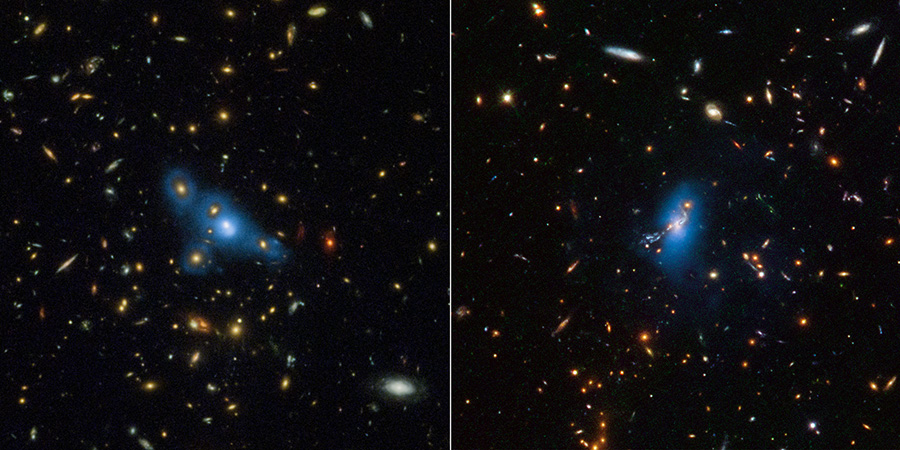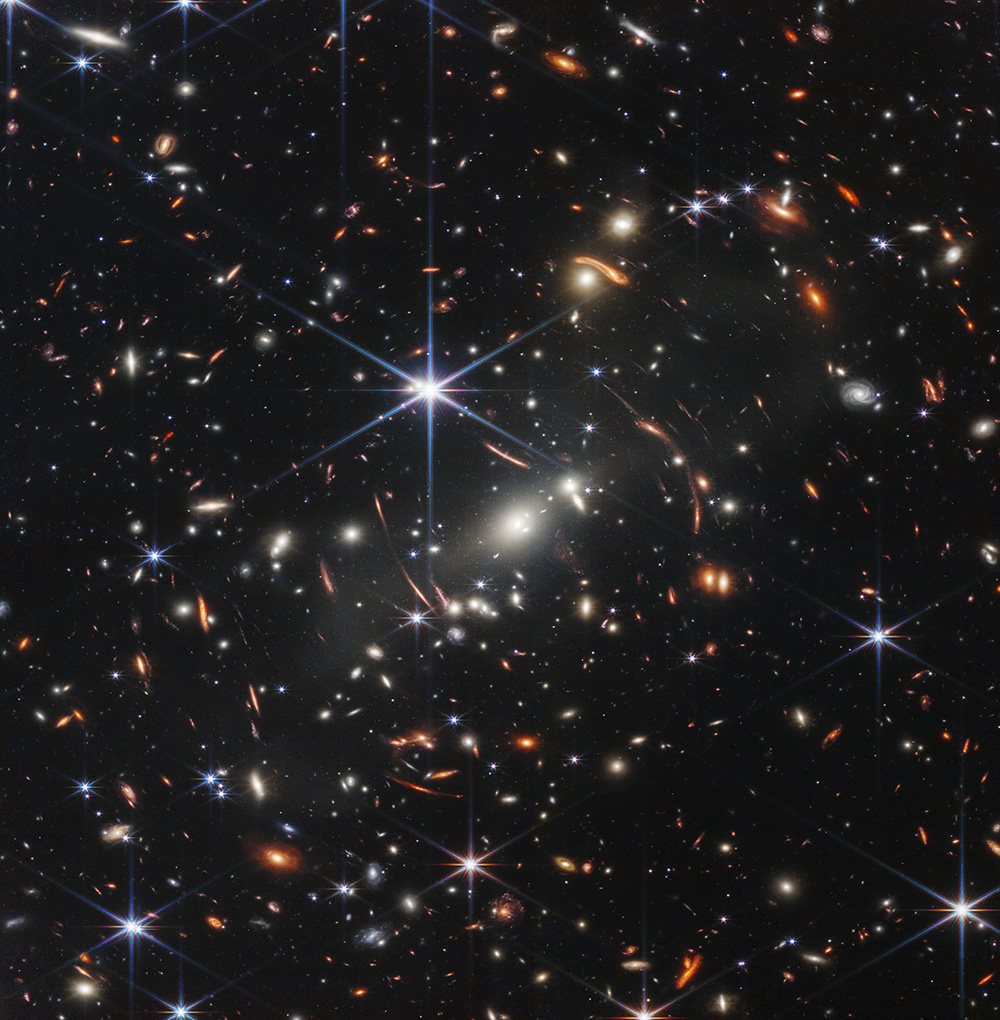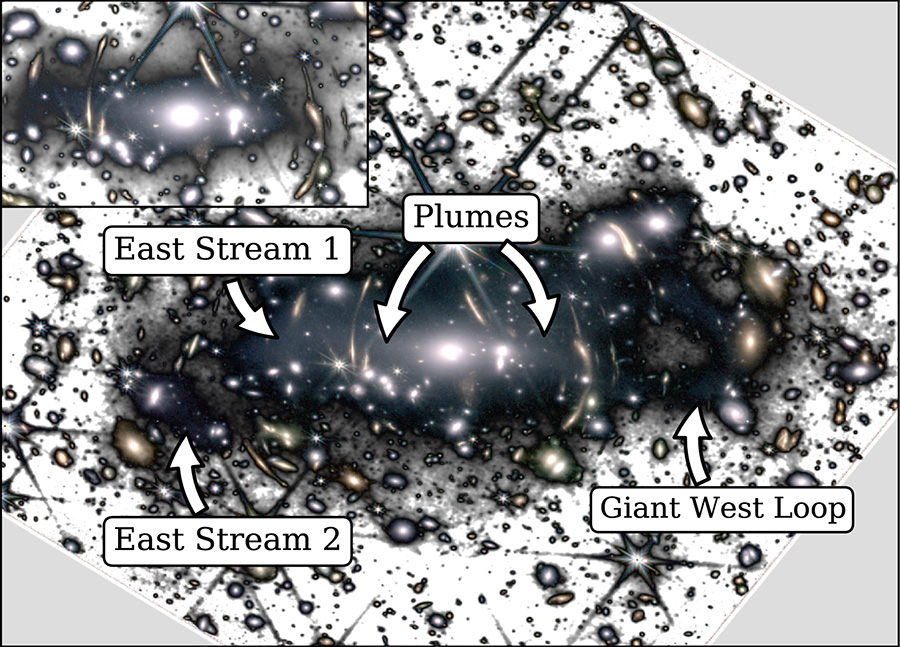Deep images of galaxy clusters reveals the light of wandering stars. What set these stars free from their hosts?
Sometimes, galaxies lose their stars. Just as a jostle on a crowded sidewalk might leave pennies dropped on the ground, gravitational interactions between crowded-together galaxies can fling a few stars out of their hosts and into the space between.
Astronomers term this faintest of glows intracluster light, and they must use powerful observatories to look for it — including the Hubble and James Webb telescopes. For the past two decades, we’ve seen this glimmer of wandering stars in pretty much every galaxy cluster we’ve looked at. But how it gets there has remained unclear: Do gravitational interactions within the cluster slowly strip stars from their hosts? Or are a bunch of stars lost all in one go as clusters come together?
Hubble's View
In the January 5th Nature, Hyungjin Joo and M. James Jee (Yonsei University, Republic of Korea) went a step beyond previous studies by studying a set of 10 galaxy clusters. Long-exposure Hubble images reveal intracluster light within the inner 650,000 light-years or so of each cluster. The clusters are at a range of distances from Earth, representing the universe at roughly a quarter to half its current age.

Science: NASA / ESA / STScI / James Jee (Yonsei University); Image processing: Joseph DePasquale (STScI)
Despite the range of distances, Joo and Jee find that the clusters all have about the same fraction of intracluster light. That seems to imply that that fraction doesn’t change over cosmic time. The result, the researchers argue, suggests that most of the wandering stars aren’t torn one-by-one from their galaxies as they pass through the cluster, but rather are lost wholesale as clusters merge and galaxies are torn apart.
At first blush, this appears to contradict theoretical predictions, which would have the glow of intracluster light grow over time. But Chris Mihos (Case Western Reserve University), who has helped make some of those predictions, says it’s actually right in line with theory.
Mihos notes that even though the 10 clusters Joo and Jee investigated are at a range of distances, and thus reside in the universe at different ages, the clusters themselves are all fully grown. The researchers acknowledge this, noting that each of their clusters contains between 100 trillion and 1,000 trillion Suns’ worth of mass, typical of mature galaxy clusters.
“It’s not the universe clock that’s important, it’s the cluster clock . . . how quickly did the cluster form,” Mihos says. Current theory says that every cluster forms from many collision of smaller groups of galaxies, and it’s these mergers that tear at galaxies and release some fraction of their stars into intergalactic space.
Theoretical predictions therefore actually agree with what Joo and Jee found: When astronomers look at a fully mature cluster, most of the light they see should indeed come from major mergers rather than from the slower stripping of stars.
“What would be really interesting would be to look at the diffuse light in [smaller] groups of galaxies, because those are going to grow up to be the clusters today,” Mihos says. But then he laughs: “I’m asking for the impossible. Maybe with James Webb.”
Wandering Stars with Webb

NASA / ESA / CSA / STScI
A recent study by Mireia Montes and Ignacio Trujillo (both at the Astrophysical Institute of the Canaries, Spain) shows that Webb is indeed capable of probing intracluster light. The astronomers went to Webb’s early-release image of the SMACS 0723 galaxy cluster, measuring its intracluster light out to 1.5 million light-years — twice as far out as has been possible with Hubble.
In agreement with Joo and Jee, Montes and Trujillo find that the lost stars in the innermost regions probably came from a major merger; however, they think the wanderers in the sparser outer regions are more likely to come from gravitational interactions over cosmic time. “The diffuse extended component is being built now,” they write.

Montes & Trujillo / Astrophysical Journal Letters 2022
This study is only the beginning. Over this year, Webb is set to observe several protoclusters, shedding light on the lost stars within these less mature structures. “Future studies of the intracluster light are set to revolutionize our understanding of cluster formation,” Montes and Trujillo write.
References:
Hyungjin Joo and M. James Jee. “Intracluster light is already abundant at redshift beyond unity.” Nature, 2023 January 5
Mireia Montes and Ignacio Trujillo. “A New Era of Intracluster Light Studies with JWST.” Astrophysical Journal Letters, 2022 December 1
 1
1









Comments
Martian-Bachelor
February 19, 2023 at 10:10 pm
The link to the Joo and Jee paper in Nature has a typo; it should be
https://doi.org/10.1038/s41586-022-05396-4
If the intracluster light "production occurs in tandem with the formation and growth of the brightest cluster galaxies and/or through the accretion of preprocessed stray stars", then most of its mass must be in long-lived, lower mass stars. Thus the B-V colors in the rest frame of the cluster should be on the warm side, at least as high as the Sun (~0.65) and maybe up closer to 1.0 . Are there any relevant measures of the intracluster light's color?
You must be logged in to post a comment.
You must be logged in to post a comment.